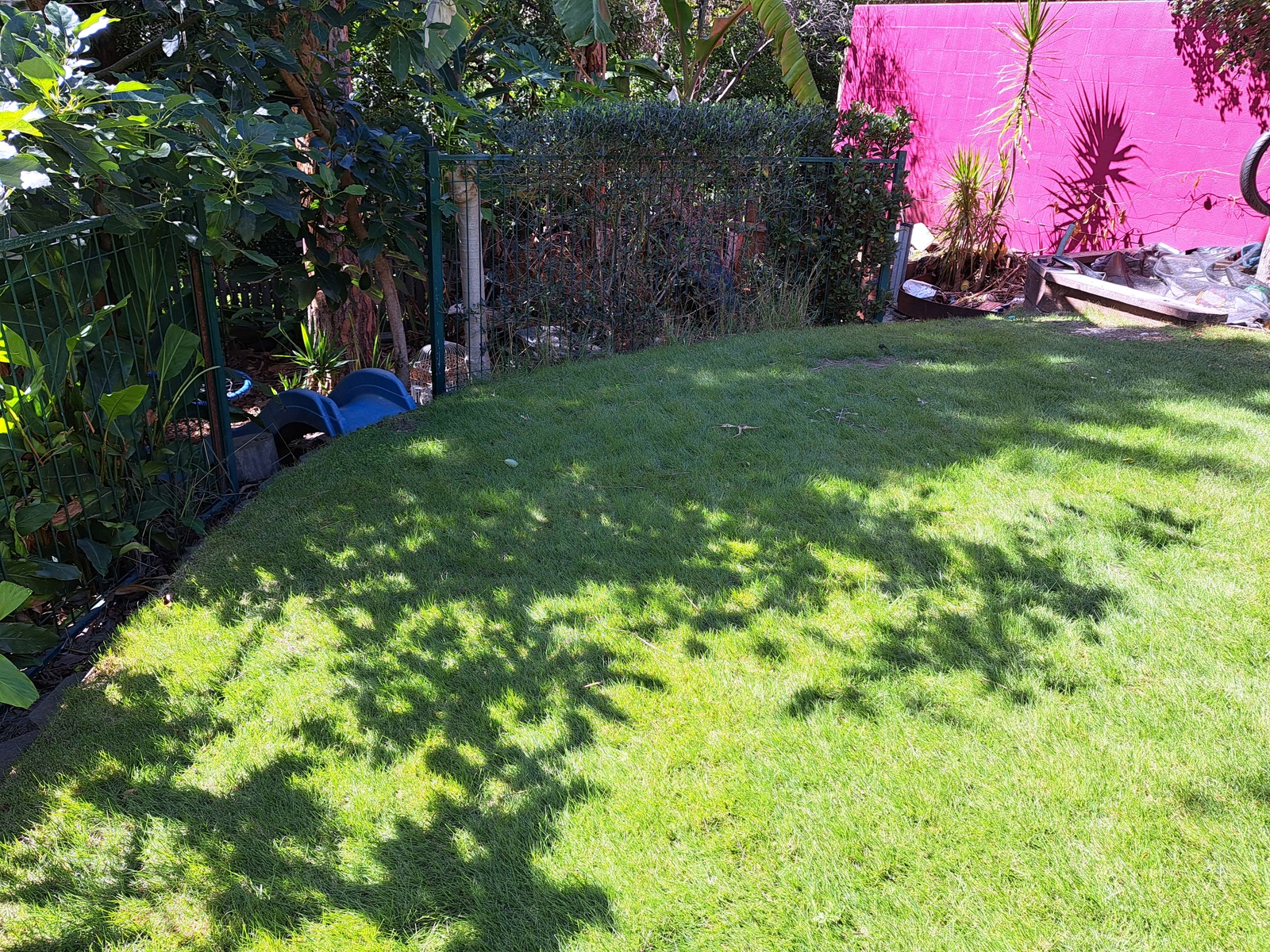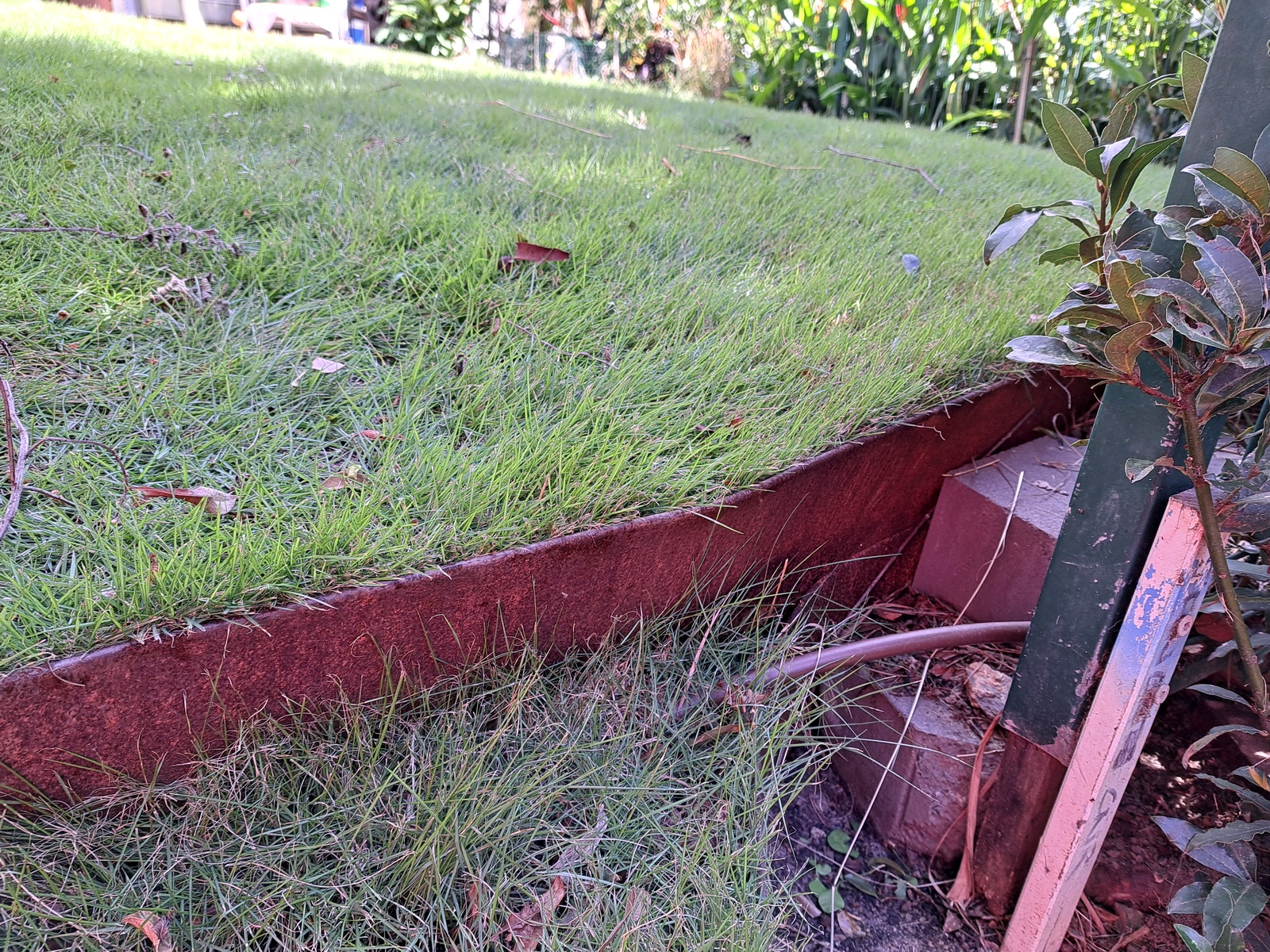There’s something innate about most human’s love of clean green lawn. Perhaps it is linked to our distant past on the high plains of Africa, like this is the ultimate luxury savannah imaginable. Safe and soft. To get more of that high plains feeling, here are some design tips I feel are essential to a good feeling lawn.
1. Flatten you lawn
While all lawns will need a slight slope to assist with drainage during large downpours, avoiding sloping lawns in your garden design can provide a myriad of benefits. First there is the lawn’s ability to capture and slow any rainfall by directing water into the ground where it can be stored and used. This will reduce or even eliminate any erosion. Secondly, a flatter lawn will increase your useable space- think ball games, picnics, and entertaining (no more spilt drinks!). Thirdly, a flat lawn is easier and safer to maintain. No pushing mowers up steep slopes. Finally a word on light- flatter lawns can increase or decrease sun exposure depending on the orientation of the slope- this can have benefits such as reducing water use and increasing the variety of suitable turf types available. A professional designer can help you explore all the possibilities.

2. Make the lawn the feature
Need a ‘feature’- it’s the lawn! Rather than thinking of your garden as an expanse of lawn with gardens pushing into the lawn, think of the lawn as surrounded by garden. Not only will you automatically make an outdoor room, you can flip the focus to the lawn. If on a hillside, picture the whole thing as garden and then slot lawns into it. It might require some re contouring, but if it helps, sloping lawns are nothing but a maintenance hassle at best. With ever increasing building heights and smaller garden spaces, gardens are becoming starved of light and micro climates in garden spaces more extreme. Identifying the best lawn area is important, and with it’s green glow having a lawn near the center of your space acts like a beacon.
In parallel homeowners are looking for privacy via ‘outdoor rooms’. The center of the room should be flat and unambiguous, while the surrounds can feature screening vegetation and furnishing to maximize privacy and available light. It is in the surrounds where your garden beds can do the heavy lifting of retaining and screening, leaving you with a delicious, flat, multi use expanse in the center.

3. Use modern edging materials
Modern materials such as steel edging offer much more than glorious sleek lines. Past edging materials separated grass from lawn predominantly on flat ground, and not always very well. Think old cracked concrete edging, bricks and stones, all pretty much useless in stopping grass invasions and achieving sharp definition. Steel edging not only gives a sharp edge, it can raise or lower your lawn, in some cases by up to 300mm. Just like an infinity edge swimming pool, you can now have a infinity edge lawn. Playing around with the heights of lawns and gardens creates more interest- there is more mystery! And wait, there’s more- raised lawns can be self cleaning. With a slightly raised lawn, leaves can be directed away from your lawn and into your garden where they assist in mulching and weed suppression. The differences in height also make it harder for grass to invade garden areas. What’s not to love?

All gardens offer unique opportunities. A professional design can be the key to unlocking your garden’s fullest potential. Lowndes Landscapes offer design consultations and scaled plans from as little as $330.

Comments are closed.